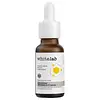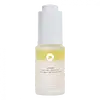What's inside
What's inside
 Key Ingredients
Key Ingredients

 Benefits
Benefits

 Concerns
Concerns

 Ingredients Side-by-side
Ingredients Side-by-side

Water
Skin ConditioningMethylpropanediol
SolventTranexamic Acid 3%
AstringentGlycerin
HumectantAlpha-Arbutin 2%
AntioxidantPanthenol
Skin ConditioningAllantoin
Skin ConditioningCentella Asiatica Extract
CleansingGlycyrrhiza Glabra Root Extract
BleachingSoluble Collagen
HumectantGlycine Soja Oil
EmollientSqualane
EmollientHydrogenated Lecithin
EmulsifyingHyaluronic Acid
HumectantHydrolyzed Hyaluronic Acid
HumectantHydrolyzed Sodium Hyaluronate
Skin ConditioningHydroxypropyltrimonium Hyaluronate
Potassium Hyaluronate
Skin ConditioningSodium Acetylated Hyaluronate
HumectantSodium Hyaluronate Crosspolymer
HumectantSodium Hyaluronate
HumectantTocopherol
AntioxidantAscorbyl Propyl Hyaluronate
Skin ConditioningDimethylsilanol Hyaluronate
HumectantPhenoxyethanol
PreservativeSaccharide Isomerate
HumectantPolyacrylate Crosspolymer-6
Emulsion StabilisingBis-PEG-12 Dimethicone
EmollientPropylene Glycol
HumectantPEG-40 Hydrogenated Castor Oil
EmulsifyingHydroxyphenoxy Propionic Acid
Skin ConditioningCitric Acid
BufferingDipotassium Glycyrrhizate
HumectantTetrasodium EDTA
Ethylhexylglycerin
Skin ConditioningPolyglyceryl-10 Oleate
Skin ConditioningSodium Citrate
BufferingSodium Benzoate
MaskingPentylene Glycol
Skin ConditioningPotassium Sorbate
PreservativeCI 17200
Cosmetic ColorantCI 77266
Cosmetic ColorantCI 18965
Cosmetic ColorantParfum
MaskingWater, Methylpropanediol, Tranexamic Acid 3%, Glycerin, Alpha-Arbutin 2%, Panthenol, Allantoin, Centella Asiatica Extract, Glycyrrhiza Glabra Root Extract, Soluble Collagen, Glycine Soja Oil, Squalane, Hydrogenated Lecithin, Hyaluronic Acid, Hydrolyzed Hyaluronic Acid, Hydrolyzed Sodium Hyaluronate, Hydroxypropyltrimonium Hyaluronate, Potassium Hyaluronate, Sodium Acetylated Hyaluronate, Sodium Hyaluronate Crosspolymer, Sodium Hyaluronate, Tocopherol, Ascorbyl Propyl Hyaluronate, Dimethylsilanol Hyaluronate, Phenoxyethanol, Saccharide Isomerate, Polyacrylate Crosspolymer-6, Bis-PEG-12 Dimethicone, Propylene Glycol, PEG-40 Hydrogenated Castor Oil, Hydroxyphenoxy Propionic Acid, Citric Acid, Dipotassium Glycyrrhizate, Tetrasodium EDTA, Ethylhexylglycerin, Polyglyceryl-10 Oleate, Sodium Citrate, Sodium Benzoate, Pentylene Glycol, Potassium Sorbate, CI 17200, CI 77266, CI 18965, Parfum
Water
Skin ConditioningTriheptanoin
Skin ConditioningC13-15 Alkane
SolventButylene Glycol
HumectantSqualane
EmollientPropanediol
SolventDicaprylyl Ether
EmollientVaccinium Myrtillus Seed Oil
Skin Conditioning1,2-Hexanediol
Skin ConditioningCyclodextrin
AbsorbentLecithin
EmollientLysolecithin
EmulsifyingEuterpe Oleracea Fruit Extract
Caprylhydroxamic Acid
Ananas Sativus Fruit Extract
Skin ConditioningTranexamic Acid
Astringent3-O-Ethyl Ascorbic Acid
Skin ConditioningNiacinamide
SmoothingPotassium Azeloyl Diglycinate
Skin ConditioningPhenethyl Alcohol
MaskingBisabolol
MaskingTocopheryl Acetate
AntioxidantCaprylyl Glycol
EmollientPhytic Acid
Water, Triheptanoin, C13-15 Alkane, Butylene Glycol, Squalane, Propanediol, Dicaprylyl Ether, Vaccinium Myrtillus Seed Oil, 1,2-Hexanediol, Cyclodextrin, Lecithin, Lysolecithin, Euterpe Oleracea Fruit Extract, Caprylhydroxamic Acid, Ananas Sativus Fruit Extract, Tranexamic Acid, 3-O-Ethyl Ascorbic Acid, Niacinamide, Potassium Azeloyl Diglycinate, Phenethyl Alcohol, Bisabolol, Tocopheryl Acetate, Caprylyl Glycol, Phytic Acid
Ingredients Explained
These ingredients are found in both products.
Ingredients higher up in an ingredient list are typically present in a larger amount.
Squalane is an emollient that helps the skin hold onto moisture. It's an oily liquid that occurs naturally in certain types of fish and plant oils.
Because squalane boosts hydration in the skin, it also comes with plenty of benefits: it is an antioxidant and can help fight free radicals and skin damage. Squalane is also found to have a detoxifying effect when applied.
Squalane comes from squalene, which occurs naturally within the sebum of our skin. It is one of the oils our skin produces to keep itself hydrated. Squalane is the hydrogenated version of squalene and has a longer shelf life.
Research shows that squalane is non-irritating (even at 100% concentration).
In general, it's a fantastic ingredient. It does a great job at hydrating the skin, and it's suitable for those with sensitive skin.
The source of squalane may impact malassezia / fungal acne. This is because olive oil derived squalane can contain impurities such as fatty acids and plant waxes. Sugarcane derived squalane is recommended for anyone with malassezia concerns.
Is squalane vegan?
This depends on the source. Squalane can be derived from both plants and animals. Most squalane used in skincare comes from plants.
Please note: the source of squalane is only known if disclosed by the brand. We recommend reaching out to the brand if you have any questions about their squalane.
Read more about squalene with an "e".
Is squalane an oil?
Squalane is often called an oil, but it’s technically not; it’s a hydrocarbon, meaning it’s only made of carbon and hydrogen, unlike true oils which are triglycerides made of fatty acids and glycerol.
The term “oil-free” isn’t regulated, so companies can define it however they want. Some exclude all oils, while others just avoid mineral oil or comedogenic oils.
While some people avoid oils thinking they cause breakouts, the right kind of oil (or oil-like ingredient like squalane) can actually help balance and hydrate your skin. It’s worth testing out simple oils or squalane to see what works best for your skin.
Learn more about SqualaneTranexamic Acid is best used for treating hyperpigmentation, discoloration, and melasma. It can also help build a stronger skin barrier.
Once applied, Tranexamic Acid starts decreasing inflammation from UV exposure. Tranexamic Acid also prevents our skin cells from meeting the pigment production cells.
Its brightening property makes it great at reducing the appearance of acne scars and marks.
Fun fact: Tranexamic Acid is also a medication used to reduce heavy bleeding.
This acid is derived from lysine, an amino acid.
Learn more about Tranexamic AcidWater. It's the most common cosmetic ingredient of all. You'll usually see it at the top of ingredient lists, meaning that it makes up the largest part of the product.
So why is it so popular? Water most often acts as a solvent - this means that it helps dissolve other ingredients into the formulation.
You'll also recognize water as that liquid we all need to stay alive. If you see this, drink a glass of water. Stay hydrated!
Learn more about Water